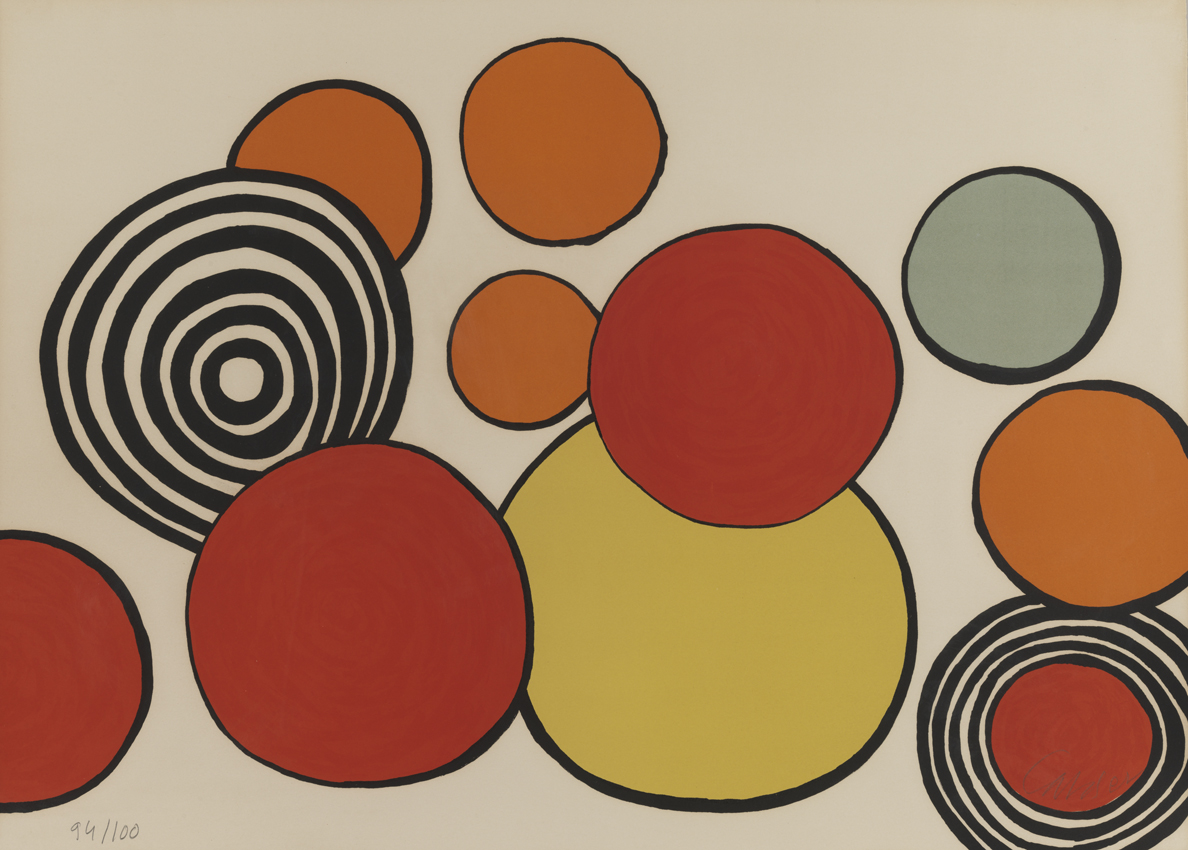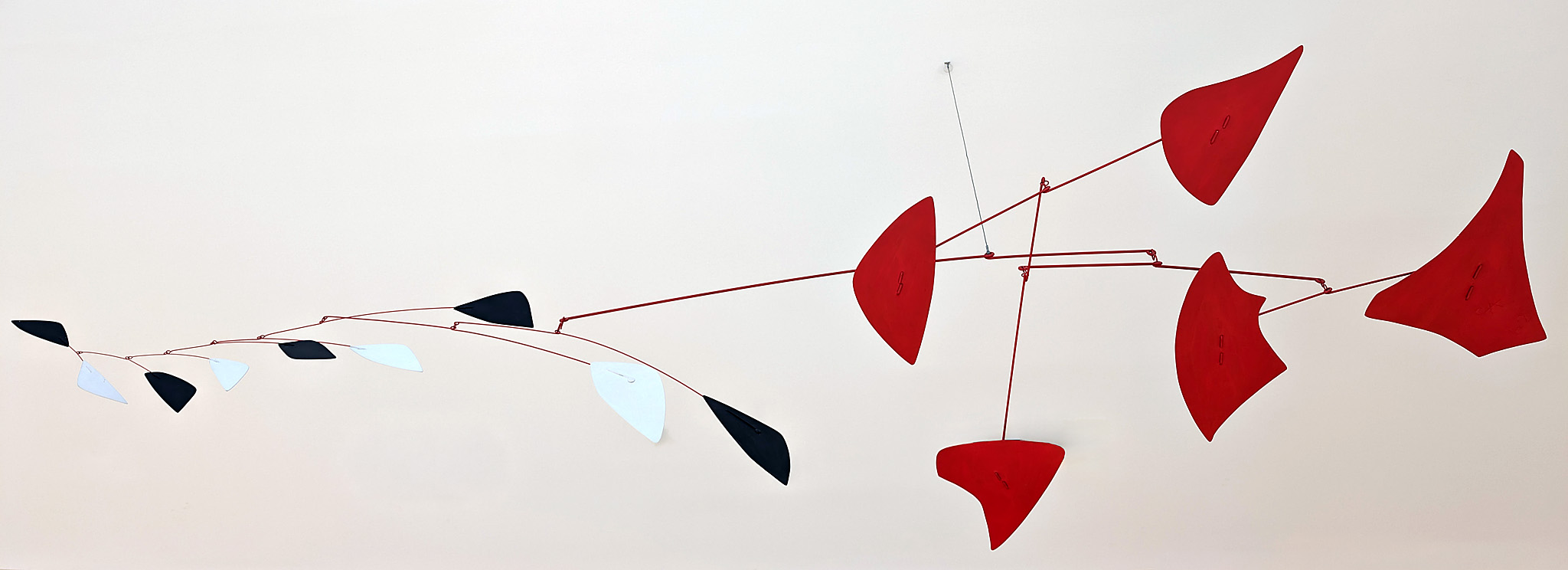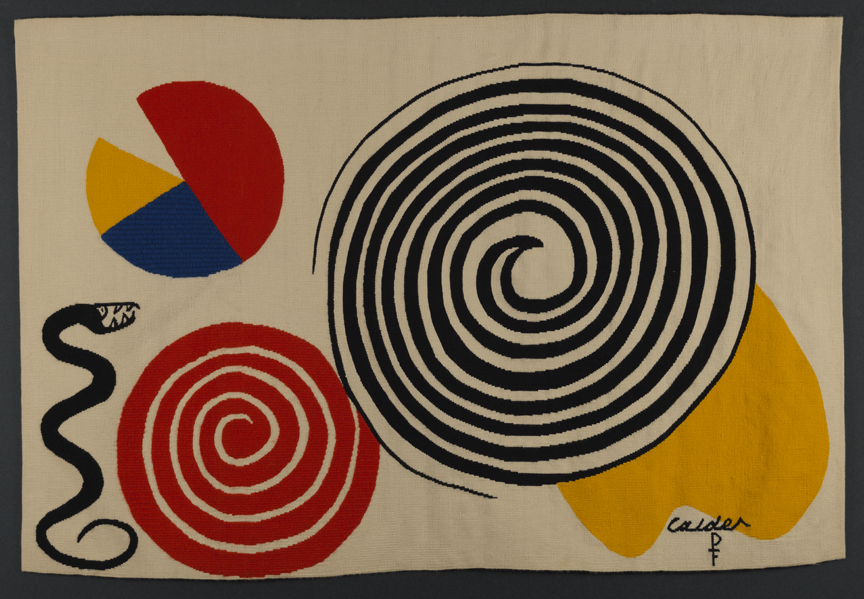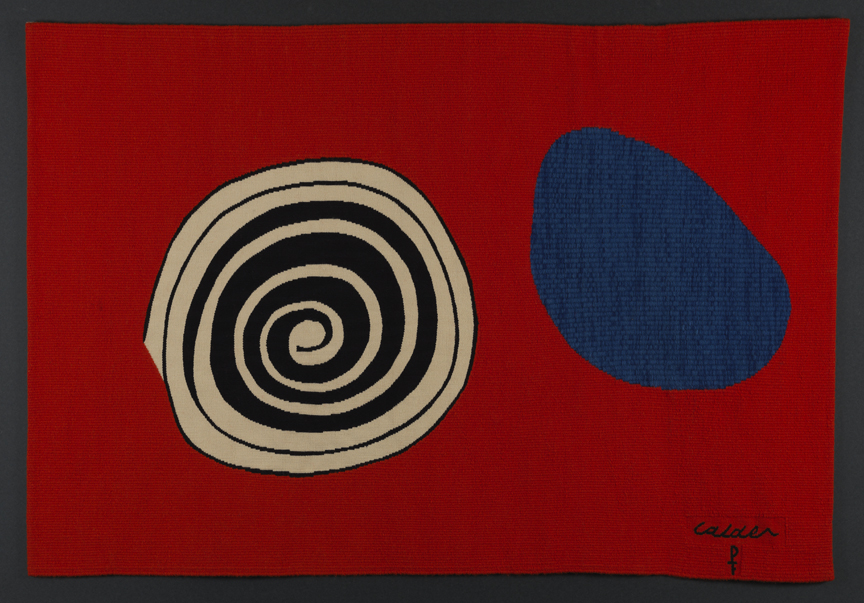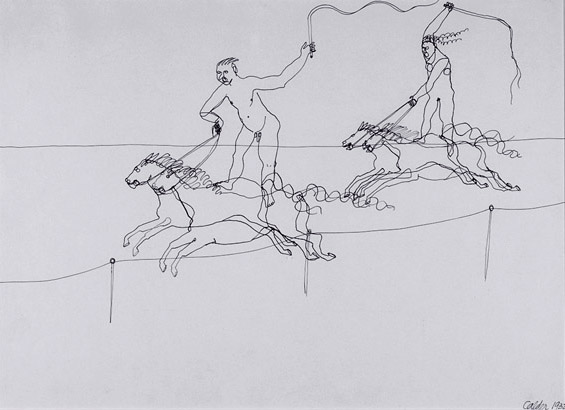
Equestrians (Circus Riders)
Alexander Calder
Alexander ("Sandy") Calder was a native Philadelphian, the son and grandson of famous sculptors associated with the city. Calder was also one of the first American sculptors to gain recognition in Europe, where he spent much of his time after 1926. His signature sculptural invention was dubbed the "mobile" by the artist Marcel Duchamp. It became one of the most famous icons in twentieth-century art. While studying at the Art Students League in New York in the mid-1920s he discovered the circus world and thus began his lifelong fascination with that milieu. In 1926 in Paris, he created a complex, movable, miniature "Circus" in wire, and in the early 1930s produced more than one hundred drawings of circus subjects. "Equestrians" is typical of the works in this whimsical series, exhibiting Calder's brilliant continuity of line and his subtle economy of means. The first of three Calder works to enter the Academy collection, it would be followed by "Route Barrée" in 1962, and his six "Bicentennial Tapestries" in 1976.
Artist
Date of Birth
(1898-1976)
Date
1932
Medium
Pen and ink on off-white wove paper
Dimensions
14 x 19 1/8 in. (35.56 x 48.5775 cm.)
Accession #
1961.16.1
Credit Line
Gift of Carl Zigrosser, in memory of Leo Asbell
Copyright
© Calder Foundation, New York / Artists Rights Society (ARS), New York
Category
Subject
We're so excited you're planning to visit PAFA!
Make time for art — visit us Thursday to Sunday.
Before reserving your tickets, please review helpful information about museum hours, accessibility, building access, and special admission programs.
If you have any questions, feel free to reach out to us at visitorservices@pafa.org — we’d love to help!
